Welcome to a world where nature’s charm meets the comfort of your living room—explore the joys of indoor gardening with our guide, “The Best Indoor Plants for Beginners.” Whether you’re new to the green-thumb club or a seasoned gardener looking to bring your expertise indoors, this guide is your stepping stone to cultivating a thriving indoor oasis. Each plant on our list has been handpicked for its resilience and ability to flourish with minimal fuss, ensuring you experience the pride of nurturing life without the intimidation of complex care routines.
Imagine the satisfaction of watching your leafy companions transform your home into a vibrant sanctuary, purifying the air and boosting your mood. Throughout this guide, you’ll discover practical tips and insider secrets that make indoor gardening an accessible and rewarding endeavor for everyone. With our expert advice, you’ll feel confident and inspired as you embark on this lush adventure, knowing that success is just a leaf’s length away.
Spider Plant (Chlorophytum comosum)
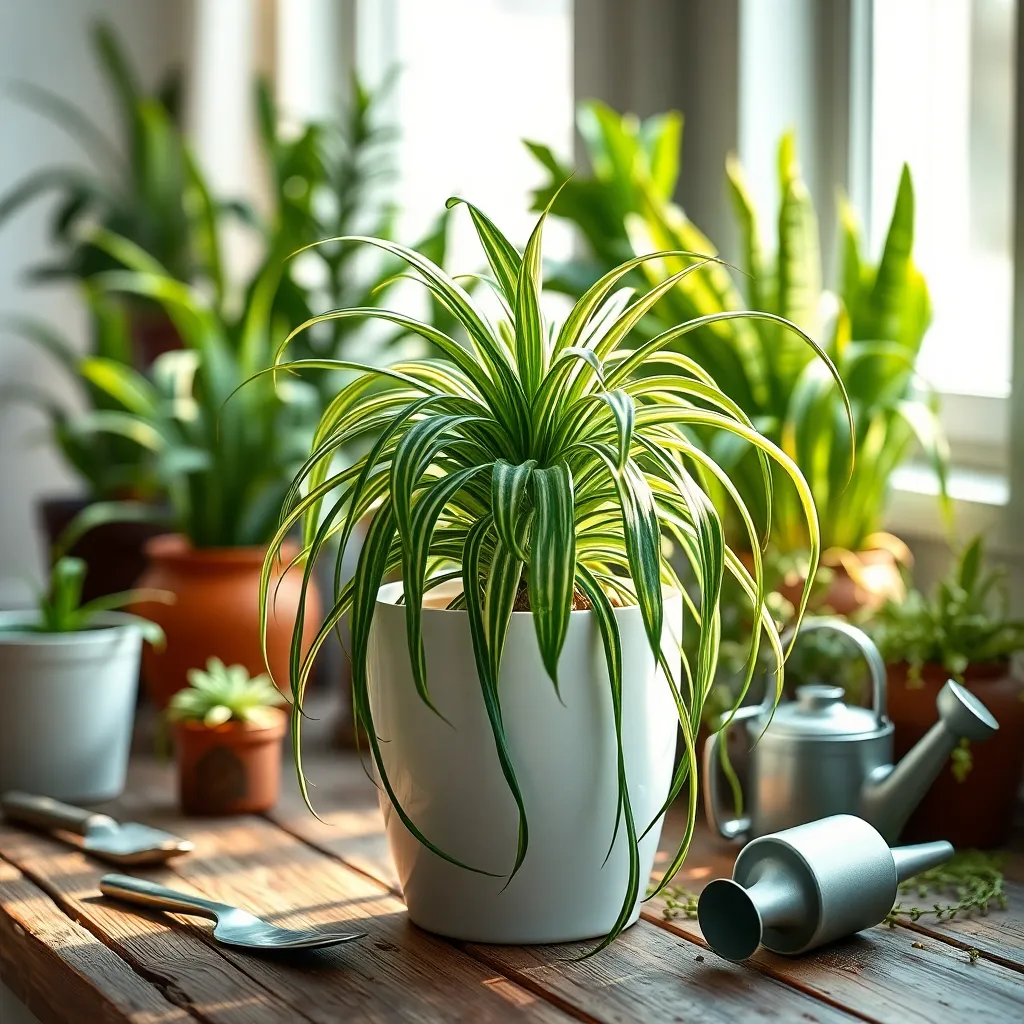
The Spider Plant, or Chlorophytum comosum, is a fantastic choice for beginners due to its resilience and ease of care. It thrives in a variety of conditions, making it a forgiving plant for those still learning the ropes of indoor gardening.
Place your Spider Plant in a location with bright, indirect sunlight to keep it healthy and thriving. However, it can also tolerate lower light levels, though its growth may slow down slightly.
Water the Spider Plant moderately, allowing the top inch of soil to dry out between waterings. Overwatering can lead to root rot, so it’s crucial to ensure the pot has proper drainage.
To encourage robust growth, feed your Spider Plant with a balanced liquid fertilizer every month during the growing season. For a more advanced touch, consider repotting your plant every couple of years to refresh the soil and accommodate its expanding root system.
Peace Lily (Spathiphyllum spp.)
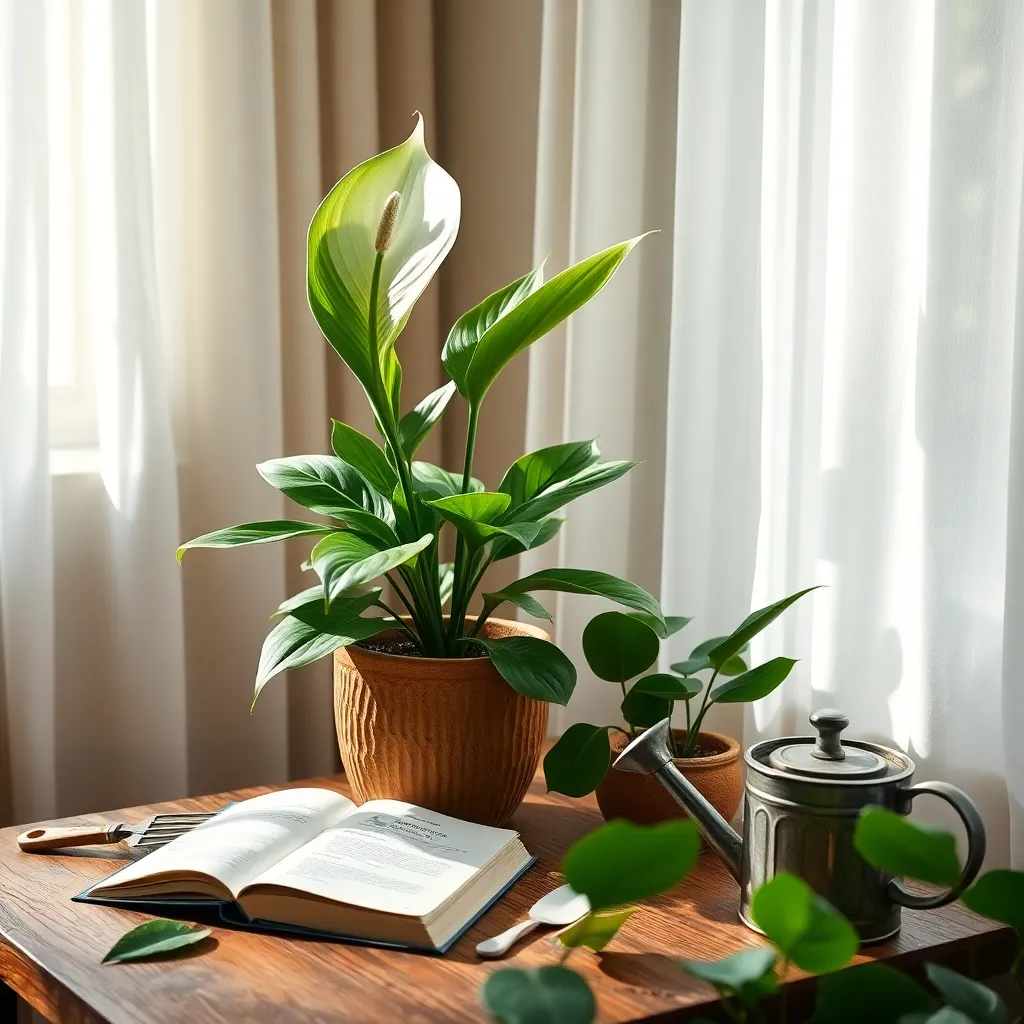
The Peace Lily (Spathiphyllum spp.) is a fantastic choice for beginner indoor gardeners due to its low-maintenance nature. Known for its elegant white blooms and lush green leaves, this plant adds a touch of tranquility to any room.
For optimal growth, place your Peace Lily in a location with indirect sunlight, as direct sunlight can scorch its leaves. If you notice your plant drooping, it’s a clear sign that it needs watering, but be cautious not to overwater it, as this can lead to root rot.
Peace Lilies prefer a well-draining potting mix, so consider using a soil blend that includes perlite or orchid bark for improved aeration. Aim to water your Peace Lily once a week, allowing the top inch of soil to dry out between waterings to prevent over-saturation.
For those looking to encourage blooms, consider feeding your Peace Lily with a balanced, liquid houseplant fertilizer every six to eight weeks during the growing season. While generally resilient, this plant thrives best in temperatures between 65°F to 80°F, away from cold drafts or sudden temperature changes.
Aloe Vera (Aloe barbadensis miller)
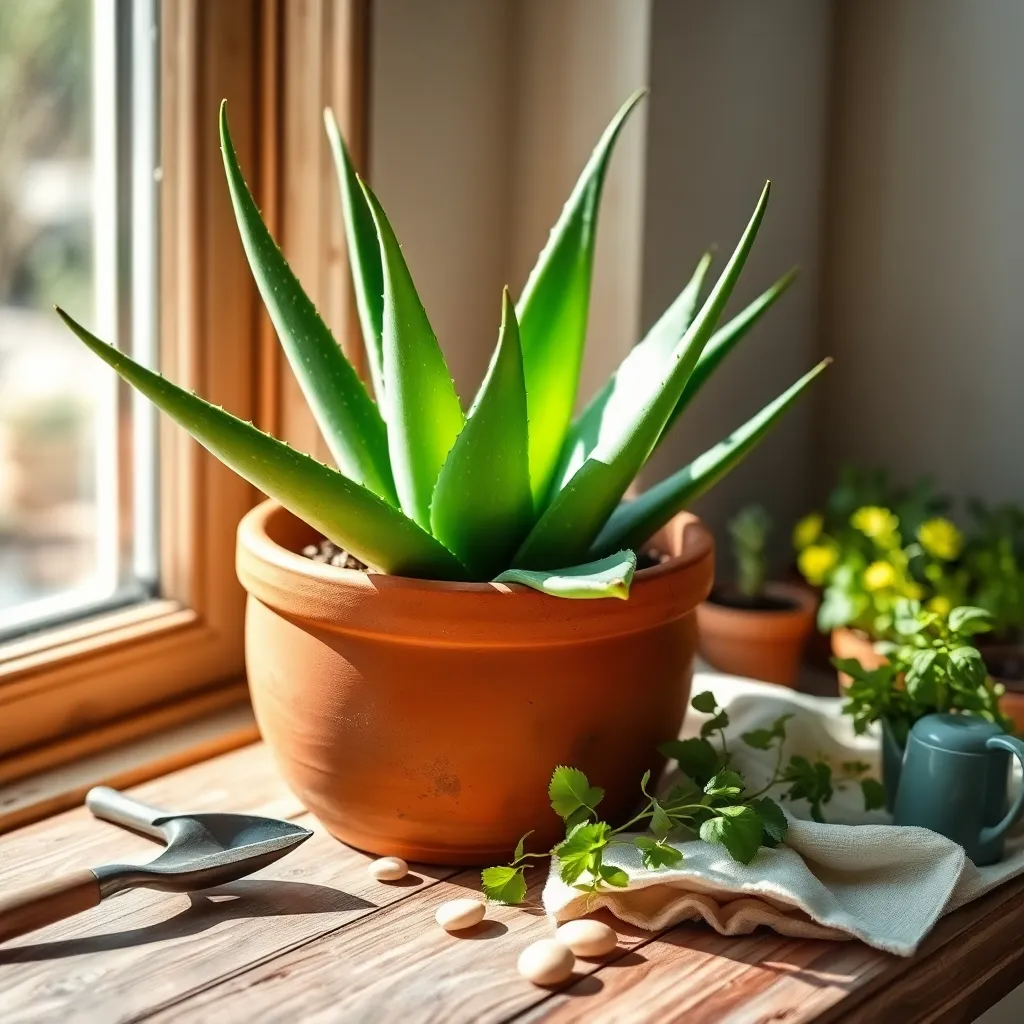
Aloe Vera (Aloe barbadensis miller) is a superb choice for beginners due to its hardy nature and minimal care requirements. This succulent thrives in bright, indirect light, making it perfect for a sunny windowsill.
Water Aloe Vera sparingly, allowing the soil to dry out completely between waterings. Overwatering is a common mistake, so it’s best to err on the side of underwatering to prevent root rot.
For optimal growth, use a well-draining cactus or succulent potting mix, which can be enhanced by adding perlite or coarse sand. Repotting every two to three years in a slightly larger pot will accommodate growth and maintain soil health.
Advanced gardeners can propagate Aloe Vera from offsets, which are small pups that appear at the base of the plant. Simply detach these pups, let them dry for a day or two, and plant them in their own pots to start new plants.
Rubber Plant (Ficus elastica)
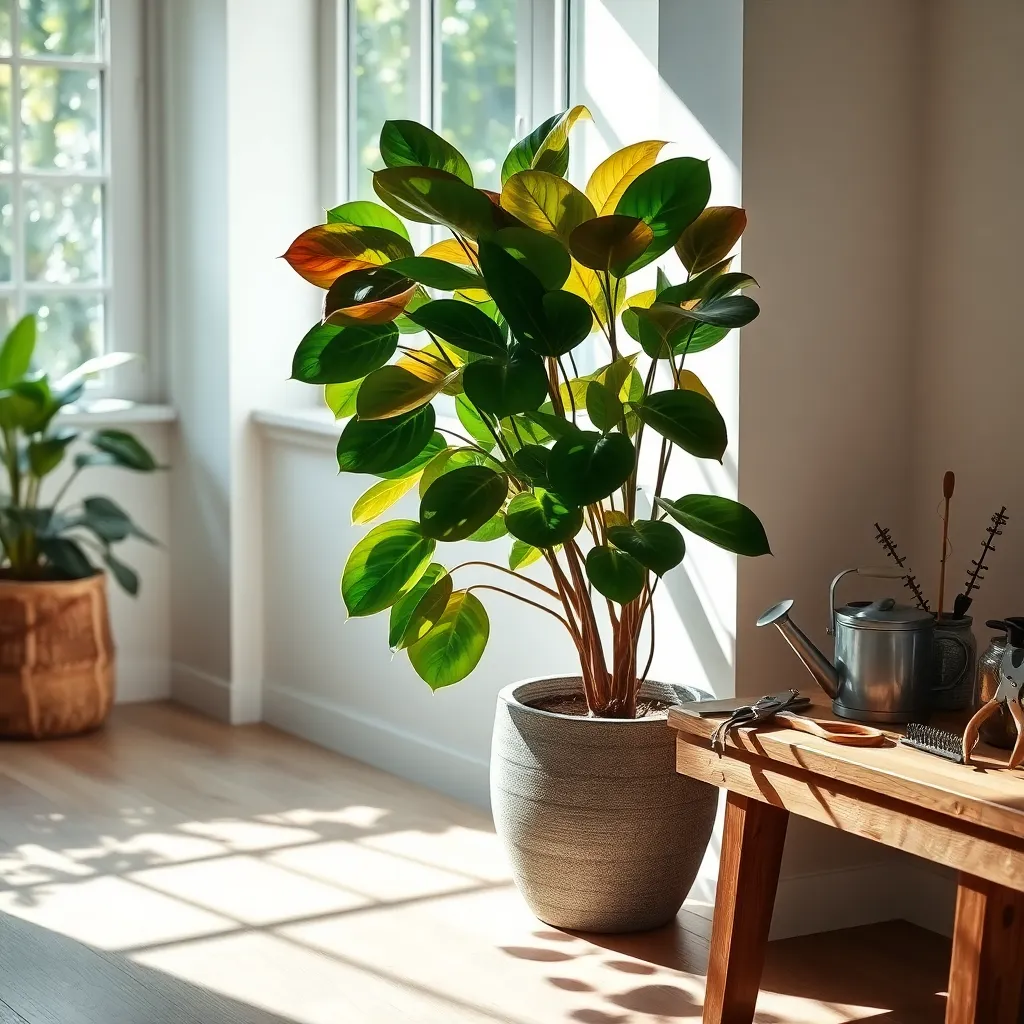
The Rubber Plant, or Ficus elastica, is a great choice for beginners looking for a robust indoor plant. Known for its large, glossy leaves, it adds a touch of lush greenery to any space.
Place your Rubber Plant in a spot with bright, indirect light to help it thrive. Too much direct sunlight can scorch its leaves, while too little light may cause them to drop.
Watering is straightforward—allow the top inch of soil to dry out between waterings to prevent root rot. During the growing season, typically spring and summer, you might need to water it weekly, but in winter, less frequent watering is required.
For optimal growth, use a well-draining potting mix, such as a mix designed for houseplants or succulents. Avoid waterlogged soil by ensuring your pot has drainage holes to let excess water escape.
- Dust the leaves regularly with a damp cloth to keep them healthy and shiny.
- If you want to encourage bushier growth, consider pruning the top of the plant in early spring.
- Fertilize monthly during the growing season with a balanced liquid fertilizer for best results.
Boston Fern (Nephrolepis exaltata)
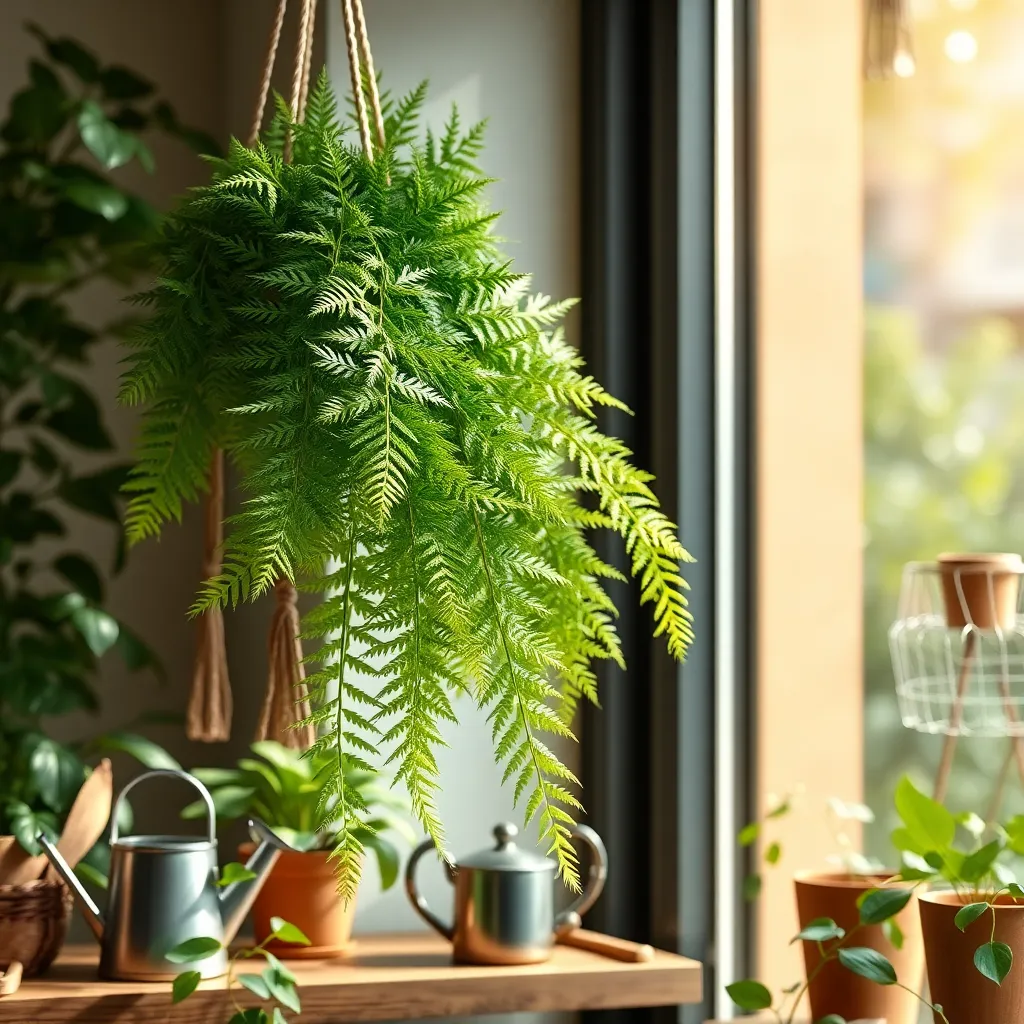
Boston Ferns, known for their lush, feathery fronds, can add a touch of elegance to any indoor space. They thrive in indirect sunlight, making them perfect for rooms with filtered light or north-facing windows.
To keep your Boston Fern happy, maintain high humidity levels around the plant. You can achieve this by misting the leaves regularly or placing a humidifier nearby, especially during dry winter months.
When it comes to watering, ensure the soil remains consistently moist but not soggy. Aim to water your fern once a week, adjusting as necessary if the air in your home is particularly dry or humid.
For the best results, plant your Boston Fern in a well-draining potting mix, such as one that includes peat moss or perlite. Fertilize monthly during the growing season with a balanced liquid fertilizer to encourage lush growth and vitality.
Conclusion: Growing Success with These Plants
In exploring the world of indoor plants for beginners, we’ve unearthed five essential relationship concepts: nurturing growth, fostering communication, embracing patience, adapting to change, and celebrating small victories. Just as a Monstera thrives with care, so do our relationships when we invest time and attention. Communication, like understanding a plant’s needs, is crucial in ensuring mutual growth. Patience is vital, as both relationships and plants flourish at their own pace. Adaptability is key when life throws curveballs, and acknowledging progress, no matter how small, keeps the journey rewarding.
Now, take a moment to choose a plant that resonates with you and start nurturing it as a symbol of your commitment to growth in your relationships. As you embark on this botanical journey, remember to bookmark this article for guidance and inspiration. It will serve as a reminder of the parallels between caring for plants and nurturing your relationships. Embrace this opportunity to cultivate enduring connections, knowing that the seeds you plant today will blossom into the thriving relationships of tomorrow. Your journey to relationship success is just beginning—let’s grow together!
